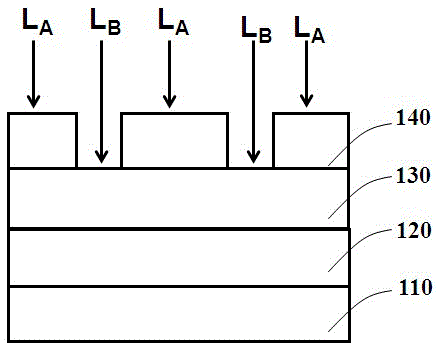Multi-junction solar cells and methods of making the same
A technology of solar cells and batteries, applied in circuits, photovoltaic power generation, electrical components, etc., can solve problems such as excessive differences in current density and low photoelectric conversion efficiency of components
- Summary
- Abstract
- Description
- Claims
- Application Information
AI Technical Summary
Problems solved by technology
Method used
Image
Examples
no. 1 example GaI
[0021] figure 2 A side cross-sectional view of a GaInP / GaAs / Ge triple-junction solar cell 100 according to a first embodiment of the present invention is shown.
[0022] Please see figure 2 , a triple-junction solar cell 100 , including a p-type Ge substrate 110 , a first Ge sub-cell 120 , a second GaAs sub-cell 130 , and a third GaInP sub-cell 140 . Generally, the first and second sub-cells, and the second and third sub-cells are respectively connected through tunnel junctions (not shown in the figure). Wherein the third GaInP sub-cell 140 has a groove pattern 150, which exposes part of the surface 130a of the second GaAs sub-cell 130 below it. Please see attached image 3 , when the solar cell is placed in the sunlight environment, the light L A Incident to the surface of the third sub-cell 140, absorbed by the third sub-cell, light L B When it is incident on the groove pattern, it is directly absorbed by the GaAs second sub-cell 130 below the groove.
[0023] Please...
PUM
 Login to View More
Login to View More Abstract
Description
Claims
Application Information
 Login to View More
Login to View More - Generate Ideas
- Intellectual Property
- Life Sciences
- Materials
- Tech Scout
- Unparalleled Data Quality
- Higher Quality Content
- 60% Fewer Hallucinations
Browse by: Latest US Patents, China's latest patents, Technical Efficacy Thesaurus, Application Domain, Technology Topic, Popular Technical Reports.
© 2025 PatSnap. All rights reserved.Legal|Privacy policy|Modern Slavery Act Transparency Statement|Sitemap|About US| Contact US: help@patsnap.com



